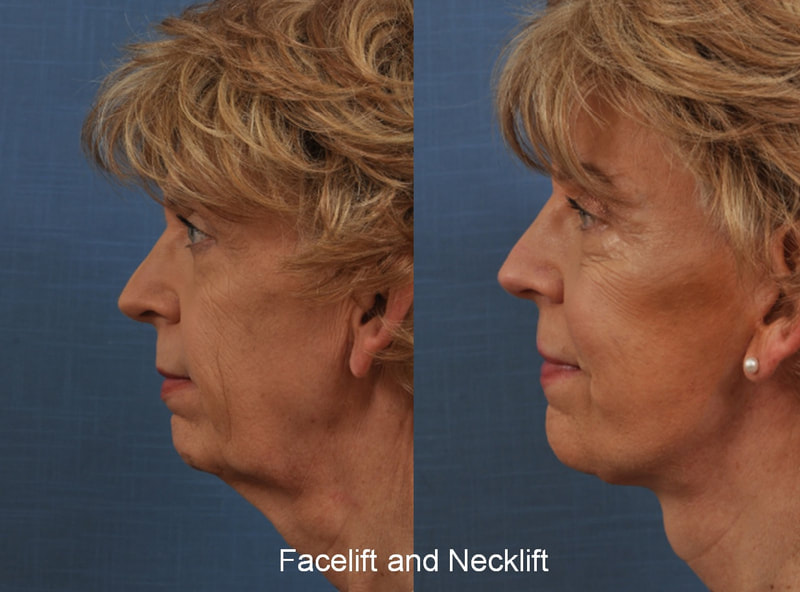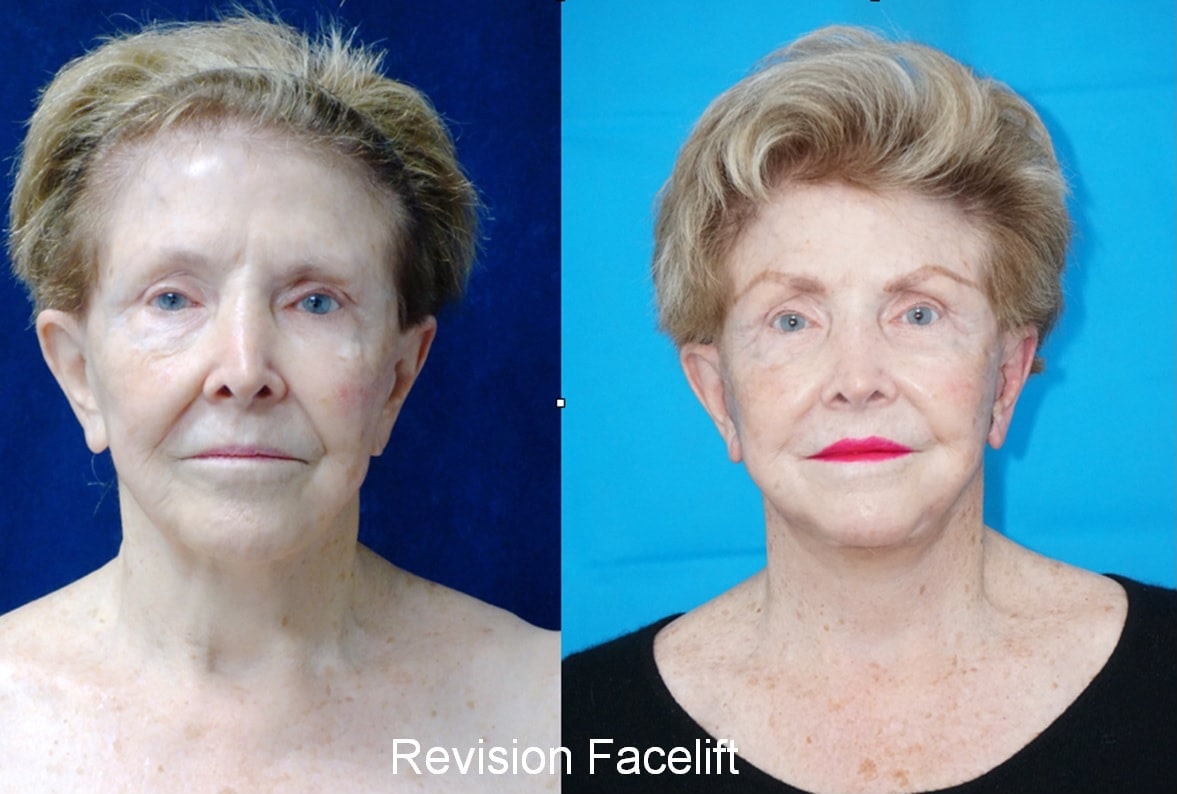The main aim of a facelift is to 'lift' or reposition tissue that has sagged or dropped down over time. A facelift is a great procedure to improve the contour in your neck, get rid of jowls or sagging around your jaw line and improve sagging in your midface and around your nasolabial folds. If you regularly notice yourself pulling on your neck or jowl to lift up the tissue then this is the procedure for you!
Facelift Procedure
Who is a candidate for a facelift?
A facelift is an elective procedure performed in patients usually in their 50s, 60s and 70s. Most patients desire a facelift because they are in good health, and still have a lot of energy but want to look refreshed, to match how they feel. As you age you lose elasticity in your skin and the skin starts to sag in certain areas such as in the middle of your neck, around your jaw line and in your midface area. The procedure will reposition this tissue and allow the surgeon to cut out the excess skin permanently removing it.
How is a facelift different from a thread lift?
At rejuvenate the face Tampa, Dr Rayess performs a deep plane facelift. What this involves is releasing the skin and the thick fascial layer that is deeper than the skin also known as the SMAS from their attachments and repositioning them to their natural position. All the tension is placed on the SMAS which is a thicker fibrous layer and will be able to retain it longer. Thread lifts or PDO thread lifts use barbed wire to lift up tissue that has sagged down. These wires are dissolvable and are not very effective when there is significant sagging of tissue. They do not reposition the deeper tissue such as the SMAS which can hold tension well.
Facelift Procedure
Who is a candidate for a facelift?
A facelift is an elective procedure performed in patients usually in their 50s, 60s and 70s. Most patients desire a facelift because they are in good health, and still have a lot of energy but want to look refreshed, to match how they feel. As you age you lose elasticity in your skin and the skin starts to sag in certain areas such as in the middle of your neck, around your jaw line and in your midface area. The procedure will reposition this tissue and allow the surgeon to cut out the excess skin permanently removing it.
How is a facelift different from a thread lift?
At rejuvenate the face Tampa, Dr Rayess performs a deep plane facelift. What this involves is releasing the skin and the thick fascial layer that is deeper than the skin also known as the SMAS from their attachments and repositioning them to their natural position. All the tension is placed on the SMAS which is a thicker fibrous layer and will be able to retain it longer. Thread lifts or PDO thread lifts use barbed wire to lift up tissue that has sagged down. These wires are dissolvable and are not very effective when there is significant sagging of tissue. They do not reposition the deeper tissue such as the SMAS which can hold tension well.
FACELIFT WITH DR RAYESS
Where are the incisions and will there be a scar?
The incisions for a facelift at Rejuvenate the face in Tampa are hidden along the curvature of your ear and then extend into the short hair in your temple and along of the back of your ear into the hairline. Sutures will be removed at one week following surgery. We place the incisions so they are hidden in natural creases and do not alter your hairline!
What technique does Dr Rayess use?
Dr Rayess uses the deep plane technique where the muscular fascia layer or SMAS is tightened removing the tension from the skin. This helps to lift tissues that have sagged as part of the natural aging process. The SMAS layer is stronger than the skin and can hence provide longer term results. The surgery is tailored depending on the patients’ needs and where they need the most lift.
What kind of anesthesia will I have?
Most of our facelifts are performed with IV anesthesia only. Similar to getting a colonoscopy and local numbing medication is used. This avoids having to put you completely to sleep. You will have an anesthesia provider looking after you in addition to the surgeon a nurse and scrub tech.
What technique does Dr Rayess use?
Dr Rayess uses the deep plane technique where the muscular fascia layer or SMAS is tightened removing the tension from the skin. This helps to lift tissues that have sagged as part of the natural aging process. The SMAS layer is stronger than the skin and can hence provide longer term results. The surgery is tailored depending on the patients’ needs and where they need the most lift.
What kind of anesthesia will I have?
Most of our facelifts are performed with IV anesthesia only. Similar to getting a colonoscopy and local numbing medication is used. This avoids having to put you completely to sleep. You will have an anesthesia provider looking after you in addition to the surgeon a nurse and scrub tech.
What is the recovery time?
The recovery time is typically 2 weeks. Most of the bruising is gone within the first 7 days and at 2 weeks you can resume most of your normal routine. It is not a painful surgery and most of our patients only use 2 or 3 pain pills the first couple of days. The process is easy for patients you will be given detailed instructions on how to clean your incisions and shower and our office is available 24/7 to answer your questions.
What is a non surgical facelift?
A non surgical or liquid facelift involves using neuromodulators and fillers and other minimally invasive techniques to improve the face with minimal downtime. They can be combined with neck liposuction and platysmaplasty depending on the patients needs. Click here to learn more about this procedure.







